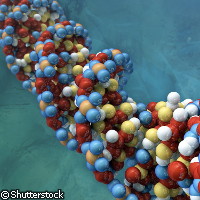Recycling gene plays vital role in preventing diseases
The word recycling is key for a sustainable environment and brings images of paper, aluminium cans and glass to mind. But does recycling play a role in the cellular world? A German team of researchers says it should, particularly because molecules tend to be available in limited numbers. The European Molecular Biology Laboratory (EMBL) and Heidelberg University partners have discovered a protein recycling mechanism capable of protecting people from genetic disorders. Their findings were published in the journal Cell. The researchers have gained a strong foothold in determining the recycling of a key molecular tag that guarantees the instructions encoded in our genes are carried out correctly. The groundbreaking finding helps solve the mystery of how to best prevent genetic diseases. According to the researchers, while the transfer of information from gene to protein in human cells is crucial, many errors can emerge during the process. Errors have the potential to trigger diseases, and a number of control mechanisms look for mistakes along the way, they said. The 'nonsense-mediated decay' (NMD) mechanism is based on a molecular tag that is attached to messenger RNAs (ribonucleic acid) which, according to the researchers, is an intermediate step in the transfer from DNA (deoxyribonucleic acid) to protein. The molecular tag, the 'exon-junction complex' (EJC), informs the NMD mechanism of the existence of a defective RNA, which is potentially dangerous and should be degraded. By and large, a cell would have to mark some 400 000 sites with EJCs but has only 10,000 copies of one of the marker's components. In a nutshell, the sooner the EJCs are broken down, the better, so that their component can be recycled. Thanks to their work, the researchers were able to discover that the PYM protein is able to break down and reuse the EJCs. 'Our results were very surprising,' explained team member Dr Niels Gehring. 'Everybody had assumed that ribosomes, the large structures that carry out protein assembly, simply iron out the EJCs as they pass,' he added. 'Now we see that this is not quite right because without PYM, EJC disassembly is impaired.' PYM is commonly linked with ribosomes despite the fact that it can be found on its own in the cell, according to the researchers. This relationship helps shed light on why and how EJCs are removed when the ribosome goes by, and could also ensure that they are not removed too early, the research showed. If EJCs were removed too quickly, the NMD would be compromised because the markers needed to guide the 'proofreading' mechanism would be missing. 'This in turn could have wider consequences, as NMD influences how diseases such as thalassaemia, Duchenne's muscular dystrophy and cystic fibrosis manifest themselves,' the team said. EMBL Associate Director Matthias Hentze said, 'The new insights fill an important gap in the basic understanding of a vital cellular process. But they also have medical implications. Ultimately, we would like to find ways to modulate NMD pharmacologically to influence the development and course of genetic diseases.'
Countries
Germany



